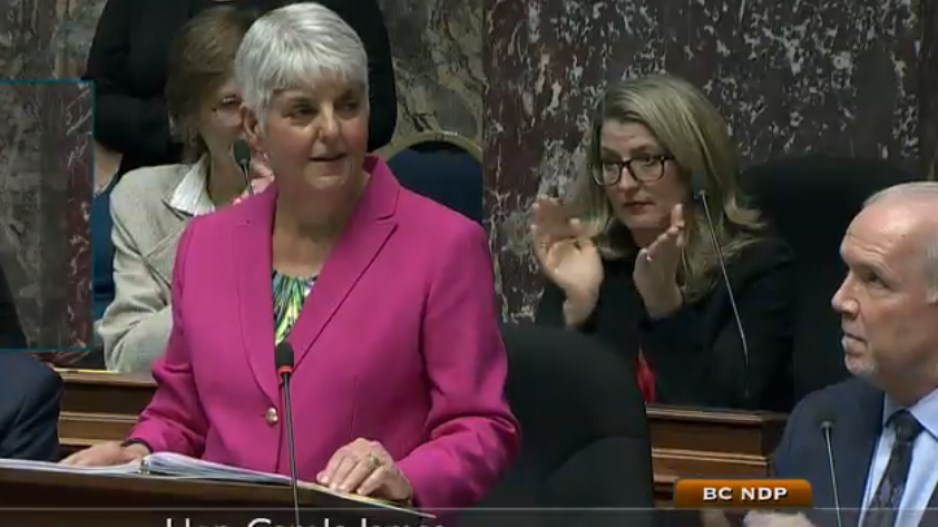What happened: The province expects B.C. to see real GDP growth of two per cent in the upcoming fiscal year — an increase of 10 basis points over its first quarterly report in 2019.
Why it matters: The increase is conservative. The provincial government is keeping its forecast low and boosting its contingencies as global trade uncertainty poses risks to B.C.’s fiscal plan.
Liquefied natural gas development in B.C. is expected to contribute to the province’s economic growth this year.
The province is budgeting for real gross domestic product (GDP) growth of two per cent in 2020, which is 20 basis points above B.C.’s estimated rate of growth last year, but notably lower than the Economic Forecast Council’s estimate of 2.4 per cent.
On average, private sector economists expect growth of 2.2 per cent. Based on their estimates, even a growth rate of just two per cent would still see B.C. lead the country in terms of growth.
The Economic Forecast Council anticipates employment to grow by 1.3 per cent this year and unemployment to sit at 4.7 per cent.
In its latest economic forecast and outlook published Feb. 18, the B.C. government conservatively outlined a picture of growth in an era of uncertainty and slower global economic activity.
It is an adjustment from the forecasts tabled in its 2019 budget, which, at the time, projected the provincial economy to grow by 2.4 per cent in 2019. That number has been reset to 1.8 per cent.
Despite that downshift, employment is now forecast to have grown by 2.6 per cent, instead of 1.1 per cent. Business investment grew by 10.5 per cent, instead of 5.9 per cent. And residential investment was up 11.2 per cent, instead of 3.8 per cent.
Housing starts, expected to fall by 16.7 per cent in 2019 at the start of last year, are now forecast to have grown by 10 per cent in 2019.
But a drop in starts hasn’t been avoided. The province now expects starts to decline by 22.1 per cent this year, followed by an 8.5 per cent drop in 2021, and a 4.8 per cent drop in 2022.
The province has also reset its price projections for natural gas. Last year, it forecast an average price of $0.72 per gigajoule in the 2019-20 fiscal year — now lowered to $0.58 — and $1.09 per gigajoule in 2022-23 — now $0.88.
The latest price forecasts are to some extent intentionally lower than the average of private sector forecasts as a measure of prudence.
Overall, natural resource revenue is forecast to decline by 7.6 per cent over the upcoming fiscal year.
Lower commodity prices and slower domestic growth are among the factors that risk threatening B.C.’s economic stability, according to the province. Those risks, which include geopolitical tensions and global trade policy uncertainty, are weighted to the downside.
The province has budgeted $1.4 billion in contingency allowances over the next three fiscal years, including $600 million for the 2020-21 year. It also includes a $300 million forecast allowance per fiscal year.
Over the next three fiscal years, B.C.’s taxpayer-supported debt-to-GDP ratio is projected to reach 17.1 per cent (2022-23), up from 14.6 per cent in 2019-20. The taxpayer-supported debt-to-revenue ratio is expected to reach 94.4 per cent in three years’ time, up from 77.9 per cent in 2019-20.
Ìý



